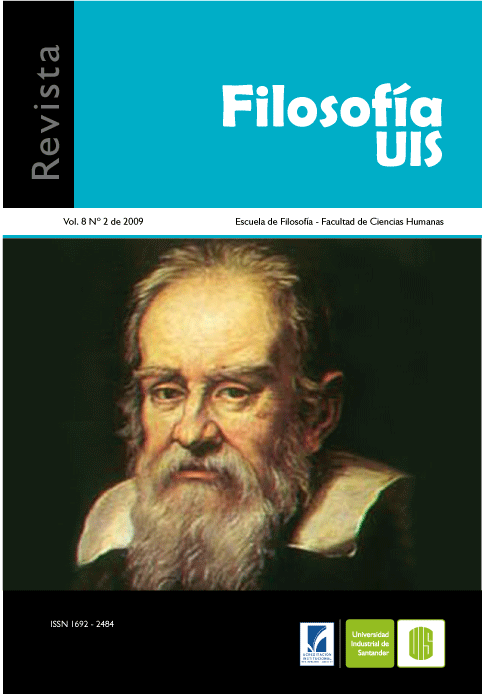Published 2009-12-16
Keywords
- Adam Smith,
- philosophy,
- Economy,
- education,
- liberalism
How to Cite
Copyright (c) 2009 Sergio Alejandro Rengifo Niño

This work is licensed under a Creative Commons Attribution 4.0 International License.
Abstract
One of the topics less explored in Adam Smith’s work is the education. Taking an excerpt from The Wealth of Nations as a point of start, the present essay wants to explore his thoughts about this question, as the part concerned to education of youth instruction and of people of all ages, making an emphasis on the sempiternal principles defended by Smith, like the liberty, autonomy, the incentives and stimulus, the relations between the individual and society and its feedback, all that is base of citizenship education. In addition, it analyzes the role of religion as a guide of the people, and the necessity of the State to make an influence over it, influences it instead of controls it or directs it, with the purpose to avoid the religious speech darks or threats the stability of a nation.
Downloads
References
- Adam Smith. En línea. Internet. Accesible en http://es.wikipedia.org/wiki/Adam_Smith. (Consulta 24-01-2009).
- Blaug, Mark (1985), Teoría económica en retrospección, Madrid, Fondo de Cultura Económica.
- Franco, Gabriel, “Estudio preliminar”, en Smith, Adam (1997), Investigación sobre la naturaleza y causas de la riqueza de las naciones, Traducción de Gabriel Franco, México, Fondo de Cultura Económica, pp. VII-XXXII.
- Ekelund, Robert B. y Hébert, Robert F. (1992), Historia de la teoría económica y de su método, Traducción de Jordi Pascual Escutia, Madrid, McGraw-Hill, pp. 105-112.
- Elton, María, Benevolencia y educación pública en Adam Smith. En línea. Internet.Accesible en http://www.cepchile.cl. (Consulta 14-01-2009).
- Jiménez Peña, G., Adam Smith y su concepción de la universidad y de la educación a la luz de la Riqueza de las naciones. En línea. Internet. Accesibleen http://philosophischebemerkungen.blogspot.com/2006/04/adam-smith-y-suconcepcin-de-la.html.(Consulta 14-01-2009).
- Ramírez, María Teresa y Téllez, Juana Patricia, “La educación primaria y secundariaen Colombia en el siglo XX”, en Robinson, James y Urrutia, Miguel (Ed.) (2007),Economía colombiana del siglo XX. Un análisis cuantitativo, Bogotá, Fondo deCultura Económica-Banco de la República, pp. 459-515.
- Sen, Amartya (2000), Desarrollo y libertad, Tradución de Esther Rabasco y Luis Toharia, Bogotá, Planeta.
- Smith, Adam (1997), Investigación sobre la naturaleza y causas de la riqueza de lasnaciones, Traducción de Gabriel Franco, México, Fondo de Cultura Económica.
- Schneewind, Jerome (1995), “La filosofía moral moderna”, en Singer, Peter (Ed.)Compendio de ética, Madrid, Alianza Editorial, pp. 217-234.
